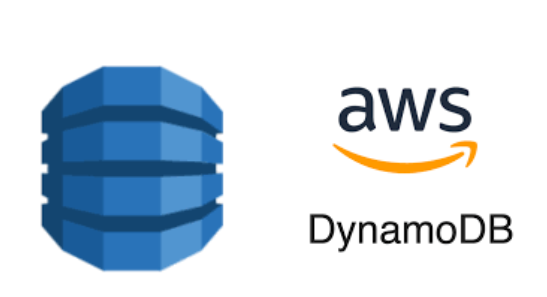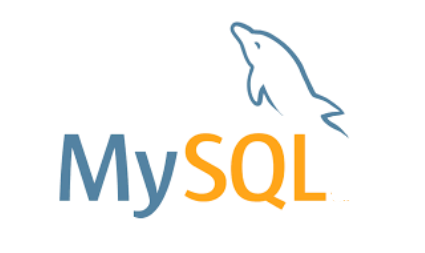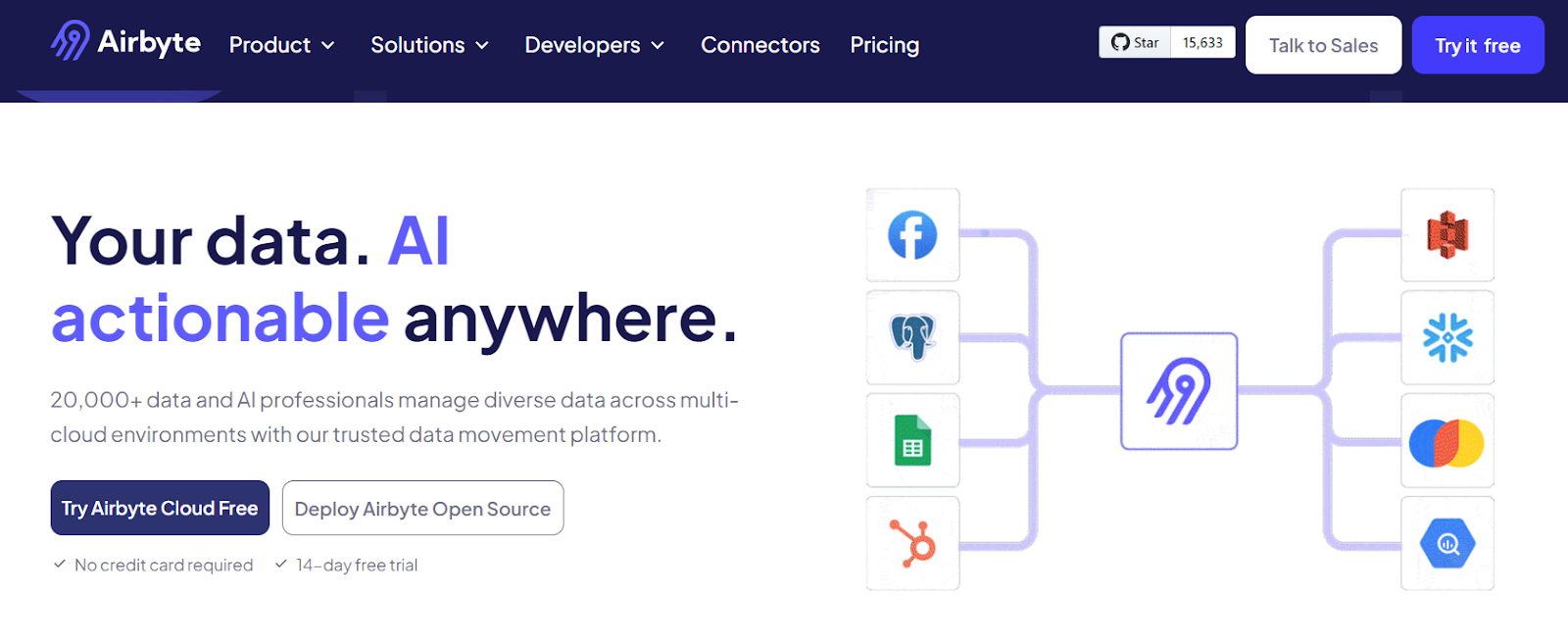DynamoDB Vs MySQL - Key Differences
Summarize this article with:
✨ AI Generated Summary
The choice between DynamoDB and MySQL hinges on application needs: DynamoDB excels in low-latency, high-scale, schema-less workloads with automatic horizontal scaling, ideal for real-time, globally distributed applications. MySQL offers strong ACID compliance, complex SQL querying, and structured data management, suited for transactional systems requiring data integrity and analytical capabilities.
- DynamoDB features: fully managed NoSQL, flexible schema, global tables, single-digit millisecond latency, and automatic scaling.
- MySQL features: open-source RDBMS, fixed schema, ACID transactions, advanced replication, and rich SQL support.
- Integration best practices include event-driven sync via DynamoDB Streams and AWS Lambda, schema transformation, and unified security management.
- Cost models differ: DynamoDB uses pay-per-request with on-demand scaling; MySQL costs depend on infrastructure and management overhead.
- Hybrid architectures leveraging both databases optimize operational and analytical workloads, with tools like Airbyte facilitating synchronization.
Selecting the right database solution presents a critical architectural decision that can determine whether your application thrives under massive scale or struggles with performance bottlenecks. With modern applications demanding both transactional integrity and horizontal scalability, the choice between DynamoDB and MySQL has become increasingly complex, particularly as organizations adopt cloud-native architectures and serverless computing models.
This comprehensive analysis examines the fundamental differences between DynamoDB and MySQL, exploring performance characteristics, scalability patterns, transaction management, cost structures, and architectural considerations. You'll discover how recent innovations in both platforms have evolved their capabilities and learn practical strategies for making the optimal choice for your specific use case.
What Makes DynamoDB Different from Traditional Databases?

Amazon DynamoDB is a fully managed NoSQL database service offered by AWS. It is built to provide low-latency, high-performance data access with automatic scaling to handle high traffic volumes.
Core Architectural Features
- Global Tables enable automatic multi-region replication for low-latency global access with strong consistency guarantees across regions. This feature has been enhanced with Multi-Region Strong Consistency capabilities, eliminating traditional trade-offs between resilience and data freshness.
- Flexible Data Model supports both key-value and document models with no fixed schema requirements. Items can contain varying attributes, enabling rapid application evolution without schema migrations or downtime.
- Consistent Performance delivers single-digit millisecond response times through automatic partitioning and adaptive capacity management. The platform automatically redistributes throughput from underutilized partitions to hot partitions experiencing heavy traffic.
- Integrated Security provides encryption at rest using AWS KMS, fine-grained IAM access control, and comprehensive audit logging through CloudTrail integration. Advanced features include attribute-level permissions and client-side encryption capabilities.
What Are the Core Strengths of MySQL?

MySQL is an open-source relational database management system (RDBMS) designed to handle structured data. It organizes information into predefined tables and supports powerful, standard SQL for data manipulation.
Enterprise-Grade Capabilities
- ACID Compliance guarantees reliable, consistent transactions with full rollback capabilities. MySQL's InnoDB storage engine provides multi-version concurrency control and row-level locking for optimal transaction isolation.
- Advanced Replication supports master-slave configurations, Group Replication for high availability, and MySQL Cluster for distributed computing. Recent enhancements include automated failover and enhanced parallel replication for improved performance.
- Comprehensive Security implements SSL/TLS encryption, user authentication, and granular privilege management. Additional security features include password validation plugins, role-based access control, and integration with enterprise authentication systems.
- Proven Scalability offers both vertical scaling through hardware upgrades and horizontal scaling through clustering or sharding strategies. MySQL 8.4 LTS introduces automatic histogram updates and InnoDB autotuning for enhanced performance optimization.
How Do DynamoDB and MySQL Compare Feature by Feature?
DynamoDB is a NoSQL database built for high-speed, scalable, low-latency access to unstructured data, whereas MySQL is a relational database optimized for structured data and transactional processing.
How Do Schema Approaches Differ Between the Two?
DynamoDB operates with a schema-less design where each item can contain different attributes, making it ideal for rapidly evolving or unstructured data scenarios. This flexibility enables developers to add new attributes without altering table structures or requiring downtime. The NoSQL approach supports nested documents and complex data types natively, accommodating diverse data patterns within a single table.
MySQL enforces a fixed schema that maintains strict data integrity and relationships through foreign key constraints and normalized table structures. This rigid approach ensures data consistency and enables complex queries across multiple related tables. While schema changes require careful planning and potential downtime, the structured approach provides powerful analytical capabilities and maintains referential integrity across the entire dataset.
The schema choice fundamentally impacts application development patterns, with DynamoDB favoring denormalized data models optimized for specific access patterns, while MySQL supports normalized designs that minimize data redundancy and enable flexible query patterns.
What Are the Key Technical Considerations for Modern DynamoDB vs MySQL Architecture?
The architectural choice between DynamoDB and MySQL represents more than a simple database selection - it defines fundamental patterns for data modeling, scalability, and operational complexity. Modern applications require careful evaluation of consistency models, performance characteristics, and integration capabilities to make optimal decisions.
Data Modeling and Consistency Paradigms
DynamoDB's Eventual Consistency Model prioritizes availability and partition tolerance, implementing a distributed architecture where data propagates across multiple nodes with sub-second convergence. This approach excels in scenarios where slight delays in data consistency are acceptable in exchange for guaranteed availability and horizontal scalability. The platform offers tunable consistency through strongly consistent reads when immediate accuracy is required, though this comes with higher latency and cost implications.
MySQL's Strong Consistency Guarantees enforce ACID properties across all transactions, ensuring immediate consistency through multi-version concurrency control and row-level locking mechanisms. This approach proves essential for financial systems, inventory management, and scenarios where data integrity cannot be compromised. The trade-off involves potential performance bottlenecks during high-concurrency operations and increased complexity in distributed deployments.
Scalability Architecture Patterns
DynamoDB's Automatic Horizontal Scaling leverages partition-based architecture where data is automatically distributed across multiple partitions based on hash key values. The platform dynamically splits and merges partitions based on throughput demands, handling traffic spikes without manual intervention. Adaptive capacity automatically reallocates throughput from underutilized partitions to hot partitions, preventing throttling during uneven workload distributions.
MySQL's Scaling Strategies require deliberate architectural decisions between vertical scaling (upgrading hardware resources) and horizontal scaling through sharding or clustering. While vertical scaling offers simplicity, it faces physical limitations and single points of failure. Horizontal scaling through MySQL Cluster or custom sharding provides distributed capacity but introduces complexity in maintaining data consistency across nodes and managing cross-shard transactions.
Performance Optimization Techniques
DynamoDB Performance Characteristics deliver predictable single-digit millisecond response times through SSD-backed storage and distributed caching layers. The platform's performance remains consistent regardless of table size, making it suitable for applications with strict latency requirements. However, complex analytical queries requiring joins or aggregations are not natively supported, necessitating denormalized data models or integration with analytical services.
MySQL Performance Optimization relies heavily on proper indexing strategies, query optimization, and buffer pool configuration. Well-optimized MySQL deployments can achieve excellent performance for complex analytical queries, joins across multiple tables, and transaction-heavy workloads. The performance characteristics depend significantly on schema design, indexing strategies, and hardware configuration, requiring ongoing tuning and optimization efforts.
What Are the Best Practices for Integrating DynamoDB and MySQL in Cloud Environments?
Modern applications increasingly leverage polyglot persistence strategies, combining DynamoDB's strengths for operational workloads with MySQL's capabilities for analytical processing. Successful integration requires careful consideration of data synchronization patterns, consistency requirements, and operational complexity.
Event-Driven Integration Architectures
Change Data Capture Patterns using DynamoDB Streams enable real-time synchronization between systems without impacting application performance. DynamoDB Streams capture item-level modifications, providing a reliable event source for triggering downstream processing. Integration with AWS Lambda functions creates serverless processing pipelines that transform NoSQL data structures into relational formats suitable for MySQL storage.
Batch Processing Workflows handle large-scale data migrations and periodic synchronization requirements through AWS services like AWS Database Migration Service or custom ETL pipelines. These approaches prove effective for historical data transfers, reporting workflows, and scenarios where near-real-time synchronization is sufficient rather than immediate consistency.
Schema Transformation Strategies
Denormalization to Normalization Mapping requires careful planning to extract relational structures from DynamoDB's flexible document model. Nested attributes and complex data types must be flattened or transformed into appropriate MySQL column structures while preserving data relationships and maintaining referential integrity.
Bidirectional Synchronization Patterns demand sophisticated conflict resolution strategies when changes occur in both systems simultaneously. Timestamp-based conflict resolution, last-writer-wins policies, or application-specific business logic help maintain data consistency across systems with different consistency models.
Security and Compliance Integration
Cross-System Access Control requires unified identity management strategies that maintain security policies across both platforms. AWS IAM provides fine-grained permissions for DynamoDB access while MySQL relies on traditional role-based access control, necessitating careful coordination of access policies and audit trails.
Data Encryption Coordination ensures consistent security postures across systems through aligned encryption strategies. DynamoDB's automatic encryption at rest using AWS KMS should align with MySQL's Transparent Data Encryption settings to maintain uniform security standards throughout the data pipeline.
What Use Cases Best Suit Each Database?
DynamoDB excels in real-time, horizontally scalable workloads where performance predictability matters more than query flexibility. Gaming companies like Epic Games leverage DynamoDB for player session management, leaderboards, and real-time matchmaking systems. Retail platforms including Instacart and Nike use DynamoDB for shopping cart management, product catalogs, and recommendation engines where millisecond response times directly impact user experience and conversion rates.
MySQL shines in transactional systems requiring complex analytical queries and strong consistency guarantees. E-commerce platforms like Magento depend on MySQL for order processing, inventory management, and financial reporting where ACID compliance prevents data corruption. Content management systems like WordPress leverage MySQL's relational capabilities for managing complex content relationships, user permissions, and plugin integrations.
The choice often involves hybrid approaches where DynamoDB handles real-time operational data while MySQL manages analytical workloads and reporting requirements, creating architectures that leverage each database's optimal characteristics.
How Do Cost Structures Compare?
DynamoDB operates on a pay-as-you-go model with two primary pricing options. On-demand pricing charges approximately $1.25 per million writes and $0.25 per million reads, making it ideal for unpredictable workloads with variable traffic patterns. Provisioned capacity pricing starts at $0.00065 per Write Capacity Unit-hour, offering cost optimization for predictable workloads. Additional costs include backup storage, Global Tables replication, and DynamoDB Accelerator (DAX) caching services.
MySQL as an open-source solution incurs no licensing fees, with costs primarily derived from infrastructure resources. Cloud deployments through Amazon RDS or self-managed EC2 instances involve compute, storage, and data transfer charges. On-premises deployments require hardware investments, maintenance costs, and operational overhead for database administration and security management.
DynamoDB's pricing model suits applications with unpredictable scaling requirements where operational simplicity justifies higher per-transaction costs. MySQL proves more cost-effective for predictable workloads where infrastructure costs can be optimized through resource planning and management.
What Factors Should Guide Your Database Choice?
Scalability and Performance Requirements
Choose DynamoDB when your application demands seamless automatic scaling with minimal operational overhead. The platform handles traffic spikes automatically without manual intervention, making it ideal for applications with unpredictable workload patterns or global user bases requiring consistent low-latency access.
Choose MySQL when you need structured data management with strong transactional integrity. Applications requiring complex analytical queries, reporting capabilities, or strict ACID compliance benefit from MySQL's relational model and SQL query capabilities.
Querying and Analytics Capabilities
DynamoDB supports simple key-based queries and limited filtering operations but lacks native support for joins, aggregations, or complex analytical queries. Applications requiring sophisticated data analysis must either denormalize data models extensively or integrate with separate analytical platforms.
MySQL provides rich SQL capabilities including complex joins, subqueries, window functions, and analytical operations. The platform excels in scenarios requiring flexible query patterns, ad-hoc analysis, or integration with business intelligence tools and reporting systems.
Transaction and Consistency Requirements
DynamoDB offers basic transaction support within single regions with limited cross-table capabilities. The platform's eventual consistency model suits applications where slight delays in data propagation are acceptable in exchange for higher availability and performance.
MySQL delivers comprehensive multi-step ACID transactions with immediate consistency guarantees. Applications requiring strict data integrity, such as financial systems or inventory management, benefit from MySQL's transactional capabilities and referential integrity enforcement.
Security and Compliance Considerations
DynamoDB provides end-to-end encryption through AWS KMS, fine-grained IAM access control, and compliance with major standards including GDPR, HIPAA, and PCI DSS. The fully managed service reduces security operational overhead while maintaining enterprise-grade protection.
MySQL implements SSL/TLS encryption, role-based privileges, and LDAP authentication integration. Self-managed deployments require careful security configuration and ongoing maintenance, while managed services like Amazon RDS provide automated security updates and compliance features.
How Can You Synchronize Data Between MySQL and DynamoDB?

Synchronizing data between MySQL and DynamoDB offers strategic flexibility for organizations implementing polyglot persistence architectures. You can migrate structured MySQL data into DynamoDB's schema-less environment for improved scalability, or move NoSQL data back to relational MySQL for complex analytical processing.
Airbyte streamlines this integration challenge with over 600 pre-built connectors and enterprise-grade features designed for production environments. The platform addresses the complexity of cross-database synchronization through several key capabilities:
- Change Data Capture (CDC) replicates only incremental changes, minimizing network overhead and processing costs while maintaining data freshness. This approach proves particularly valuable for high-volume databases where full table refreshes would be prohibitively expensive or time-consuming.
- Multiple Sync Modes provide flexibility for different integration patterns, including full refresh for complete data replacement, incremental append for audit trails, and upsert operations for maintaining current state synchronization.
- Schema Change Management automatically handles evolving database schemas without manual intervention, crucial for organizations with rapid development cycles or changing data requirements. The platform detects schema modifications and adapts synchronization processes accordingly.
- Enterprise Security and Governance ensures data protection during transfer through encryption, audit logging, and compliance with major regulatory standards. Role-based access control and data lineage tracking provide visibility and control over data movement across systems.
What Should You Remember About DynamoDB vs MySQL?
The DynamoDB vs MySQL comparison reveals that each database serves distinct architectural needs rather than competing directly. DynamoDB proves ideal for high-throughput, low-latency workloads requiring automatic global scalability with minimal operational management overhead. Its serverless architecture and consistent performance characteristics make it particularly suitable for modern cloud-native applications with unpredictable scaling requirements.
MySQL remains the optimal choice for structured, ACID-compliant applications needing powerful SQL analytical capabilities and precise transactional control. Its mature ecosystem, extensive tooling, and flexible deployment options continue to serve traditional enterprise applications and complex analytical workloads effectively.
Success lies in matching each database's strengths to your specific requirements: assess your application's data structure complexity, performance demands, scalability patterns, and operational constraints. Consider hybrid approaches that leverage both platforms' optimal characteristics, using tools like Airbyte to maintain synchronized data across systems while avoiding vendor lock-in and maximizing architectural flexibility.
Frequently Asked Questions: DynamoDB vs MySQL
When should I choose DynamoDB over MySQL?
Pick DynamoDB when you need predictable low-latency reads and writes at very high scale with minimal ops, automatic horizontal scaling, and flexible, schema-less items. Typical fits: user sessions, shopping carts, IoT telemetry, gaming leaderboards, and real-time personalization.
When is MySQL the better choice?
Choose MySQL when you need strong ACID transactions, complex joins, ad-hoc SQL, and rich analytical queries. Typical fits: order processing, financial systems, inventory, CMS, and workloads that rely on relational integrity.
Does DynamoDB support transactions?
Yes, DynamoDB supports transactional APIs that provide atomic, consistent, isolated, and durable operations across multiple items and tables within a single Region. Scope and patterns are more limited than traditional RDBMS transactions, so plan access patterns carefully.
How do consistency models differ?
DynamoDB offers eventual consistency by default with an option for strongly consistent reads in a single Region. MySQL provides strong consistency within a node and ACID guarantees for transactions.

.webp)
